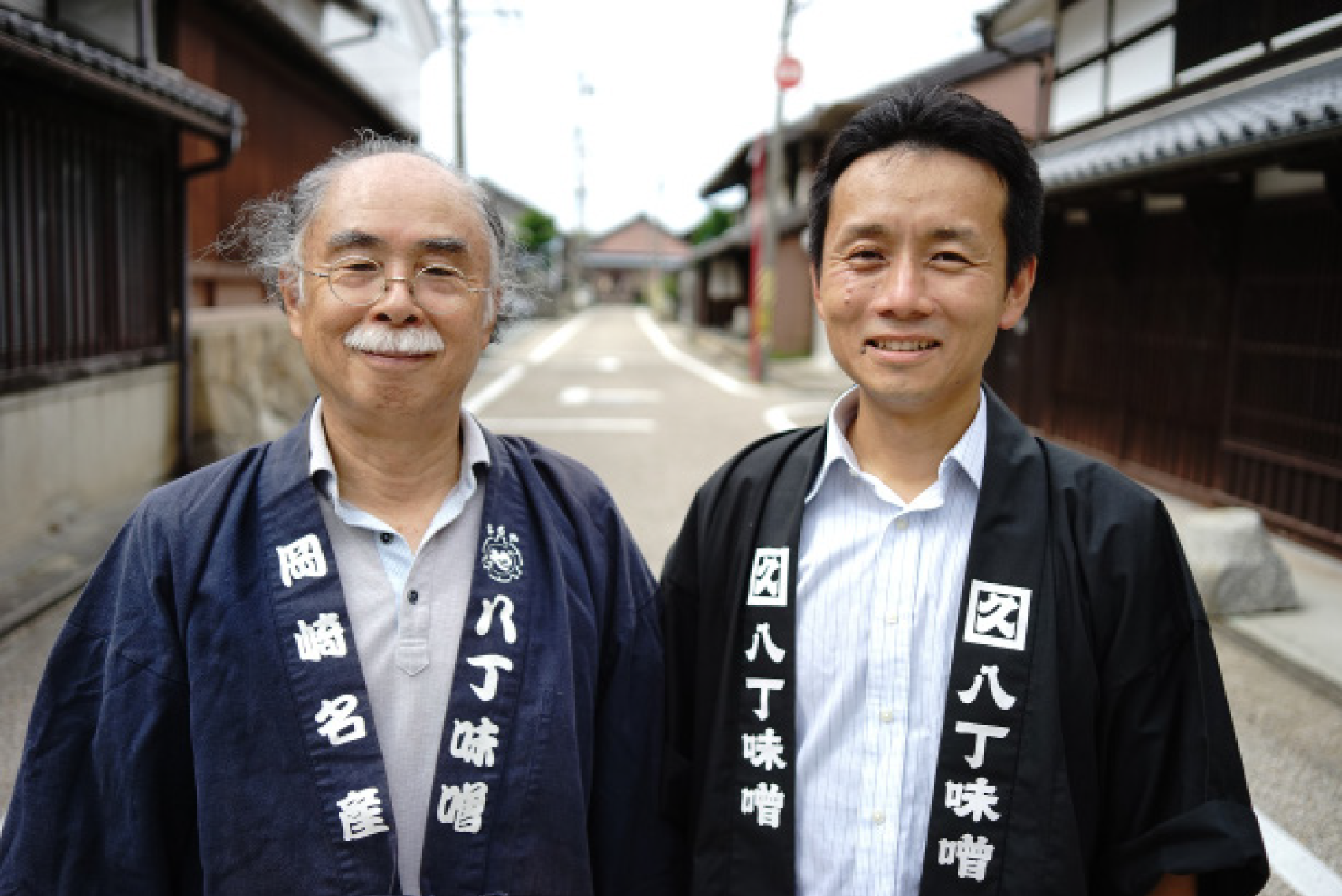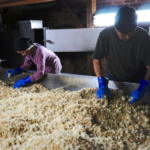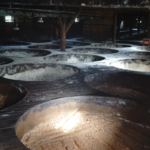【47 Hakko Aichi】愛知の八丁味噌 Hatchomiso 〜味噌汁の味は、その土地のプライド〜
味噌汁の味は、その土地のプライド
岡崎市の八帖地区で400年以上継承され、愛知はじめ東海地方で愛されている個性的な味噌。蒸した大豆にカビつけして豆麹にし、そこに塩水を加え味噌に醸していく、韓国のテンジャンなどと共通する大陸系の味噌の系譜だ。甘い米や麦の麹を入れないので、超濃厚な旨味が凝縮された苦酸っぱい風味に仕上がり、こちらもまた大陸風。かつて日本に渡ってきた味噌の原型を留める味覚の方舟であり、東海地方独特の味覚のシンボルになっている。
The taste of miso soup is the pride of that land
Hatcho Miso is a unique miso that originated over 400 years ago in the Hacho district of Okazaki City, and continued to be loved as the favorite miso in Aichi and other prefectures in the Tokai region. Hatcho Miso belongs to the genealogy of miso from Korea’s Doenjang and other similar fermented bean pastes developed in the Asian continent. It is made by fermenting steamed soybeans to make bean koji to which salt water is added and finally brewed into miso. Since it does not contain rice koji or barley koji that add sweetness to the end product, it becomes bitter and sour with a very thick, concentrated taste. It is close to the original miso that was passed on to Japan, which established itself as a symbolic taste of Tokai.
どう作って食べるか / HOW TO MAKE & EAT
❶煮た大豆を潰して玉にし、そこにコウジカビを生やして豆麹とする。
❷豆麹を塩水を混ぜてペーストにして木桶に仕込み、上から石を詰んで酸素を抜く。
❸最低2年以上熟成させて完成とする。
★ 石をピラミッド状に積むことで空気を抜き、雑味のない発酵を促す。
❶Crush the boiled soybeans and roll them into a round-shaped ball. Add koji molds and ferment it to make them into soybean koji.
❷Mix salt water with soybean koji until the mixture becomes a paste.
❸Put it in kioke and weigh down with stones to remove the oxygen. Finally let it age for at least 2 years.
★ Remove the air by piling up the stones in a pyramid to promote fermentation that is free from the impure taste.
味噌汁に
うどんを始め、煮込み料理の調味料とする
野菜や豆腐などに塗って田楽にする
As the base of miso soup
As the seasoning agent for stewed meals, including udon
Apply on vegetables and tofu to make dengaku
▶食べられている地域 / Regions where it is eaten
東海地方一帯
All around the Tokai region
▶微生物の種類 / Types of microorganisms
麹菌、乳酸菌類、酵母類
Koji-kin (Aspergillus oryzae), lactic acid bacteria, yeasts


